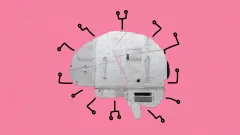Take a look inside 5 images
Analemma
Pros: Lots of interesting, detailed information with supporting animations.
Cons: Kids don't get to interact much with the app and can't apply or assess understanding.
Bottom Line: Reference tool gives in-depth coverage of interesting Earth science phenomenon, but lacks interactivity and learning assessment.
If you're looking for an interesting Earth science topic to cover in class, consider having kids use Analemma as a research tool. Kids should have some background knowledge about Earth's orbit around the sun. Break kids into pairs or small groups, and have each group research the analemma using the app as their main source of information. Encourage kids to take notes as they read and watch the animations, and then have them write a 3-2-1 summary describing three things they learned, two things they found most interesting, and one thing they still have a question about. You could also have each group write five quiz questions and swap the questions with another group to answer.
Analemma is a straightforward science reference tool. It contains specific information about a phenomenon known as the analemma, which is the figure-8 path that the sun (or other celestial body) makes as viewed from Earth (or other celestial body). The information is organized into main categories, and each category explains a different aspect of the analemma. Animations and diagrams help support the content. In the category titled Draw, kids can manipulate factors to virtually draw a graph of the analemma.
Like many reference tools, Analemma is text heavy. Kids learn by reading and watching animations, which do a great job of illustrating concepts. But the only real interaction is with the Draw feature, which allows kids to change factors like eccentricity and obliquity in order to visualize how these changes affect the analemma. Learning relies heavily on memorization, and without any sort of assessments or scored games, kids may not retain much information.













